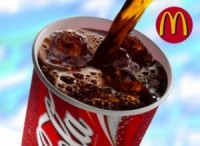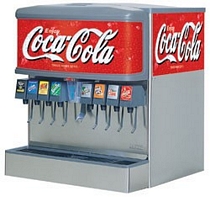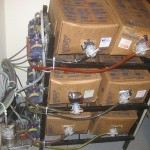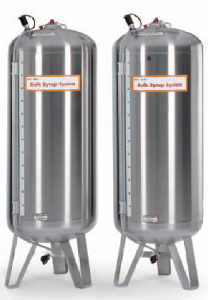New Form of Life, Discovery Published Creative Commons
The Economist reports a new form of life was discovered, very interesting. The actual scientific article is released with a Creative Commons license, awesome.
Economists summary
http://www.economist.com/node/18437900?story_id=18437900
Actual scientific article
http://www.plosone.org/article/info%3Adoi%2F10.1371%2Fjournal.pone.0018011
Secret to why McDonald’s Coke Tastes Best
 Everyone who sells Coca-Cola fountain drinks uses the same syrup and fountain machines but McDonald’s tastes better. Learn McDonald’s impossible innovation.
Everyone who sells Coca-Cola fountain drinks uses the same syrup and fountain machines but McDonald’s tastes better. Learn McDonald’s impossible innovation.
 If you’ve ever bought a Coca-Cola from a gas station soda fountain you’ve probably noticed it doesn’t taste the same as Coca-Cola from McDonald’s. You might have noticed that a Coke from other restaurants also don’t taste the same. If you look at how Coca-Cola controls every aspect from the syrup to the fountain machine you probably wonder why it doesn’t taste exactly the same everywhere.
If you’ve ever bought a Coca-Cola from a gas station soda fountain you’ve probably noticed it doesn’t taste the same as Coca-Cola from McDonald’s. You might have noticed that a Coke from other restaurants also don’t taste the same. If you look at how Coca-Cola controls every aspect from the syrup to the fountain machine you probably wonder why it doesn’t taste exactly the same everywhere.
If you are like most people, you agree Coca-Cola from McDonald’s tastes better than anywhere else. It’s hard to describe the exact way it tastes better but it certainly does. Moreover, it consistently tastes better at every McDonald’s.
What is McDonald’s the secret?
One of steps of Predictive Innovation® is to list the objects for a scenario. In the scenario of making Coca-Cola fountain drinks the objects are:
- water
- syrup
- CO2
- ratio of ingredients
- mix of ingredients
- temperature
Objects
Of all those objects, McDonald’s can only control two of them. The rest of the objects are controlled by Coca-Cola or the customers. The two things McDonald’s can control are their water and the freshness of the syrup. CO2 is a standard gas that makes the drink fizzy. The ratio of ingredients and the mix of ingredients is controlled by the fountain machine and that is set by Coca-Cola. Customers can change the temperature by adding ice. Water and freshness of syrup are the secret of McDonald’s fountain drink innovation.
Water
Water is 85% of a fountain drink. If the water is bad you will taste it. Like everything else McDonald’s does, they meticulously control their water. Each restaurant has a reverse osmosis filter providing the best water available. This not only makes the Coca-Cola taste better it also makes their coffee taste better. The water you get at McDonald’s is the cleanest anywhere and that is the #1 reason their fountain drinks taste the best.
Syrup
 Most Coke retailers get their syrup in a bag box. These bag boxes are small and allow a retailer to provide Coke with a minimal investment.
Most Coke retailers get their syrup in a bag box. These bag boxes are small and allow a retailer to provide Coke with a minimal investment.
 McDonald’s sells a lot of Coke. They sell so much coke that they don’t need to buy the syrup in the small bag box. McDonald’s restaurants can get syrup delivered from a tanker truck and store it in a stainless steel cylinder. Because they sell a lot it doesn’t sit around as long. So the Coke syrup at McDonald’s is fresher than their competitors. Fresher syrup makes better tasting fountain drinks.
McDonald’s sells a lot of Coke. They sell so much coke that they don’t need to buy the syrup in the small bag box. McDonald’s restaurants can get syrup delivered from a tanker truck and store it in a stainless steel cylinder. Because they sell a lot it doesn’t sit around as long. So the Coke syrup at McDonald’s is fresher than their competitors. Fresher syrup makes better tasting fountain drinks.
McDonald’s also controls freshness by cleaning everything daily. Letting syrup sit in hoses and machines allows it to chemically degrade and for bacteria to grow. Keeping everything clean also keeps it fresh and tasting good.
So even though all their competitors have the same basic ingredients that are required to be put together the exact same way, McDonald’s found a way to innovate and provide a better product.
Action Items
- What are the objects in your product or process?
- How can you change an object to innovate?
Ham boning robot, Abundance Report
Meat cutting is a dangerous, physically stressful, and tedious job. Replacing human meat cutters with robots is all around better if the humans have an income.
The representative repeatedly says the robots can cut oddly shaped soft objects. He is making clear that cutting ham is not the only use. The robot can cut a wide variety of foods but also non-food. They’ve likely chosen ham boning as their first task because the size makes it easier than smaller or more delicate food like fish and improving ham processing is higher value than vegetables. Defining the goal properly and finding the best entry to the market is very important for innovation success.
The makers of the Hamdas robotic meat cutting machine, Mayekawa, also make many environmentally friendly energy saving innovations. They are looking at the full range of interconnected innovations. They are using what Predictive Innovation® calls a Future Map. Each of their innovations builds on part of the other thus making each one less expensive and less risky to develop and higher value.
Many of the comments to the video bring up the concern jobs being eliminated. How can human meat cutters have an income when the job of cutting meat is done by machines? The common answer of making or repairing robots is fatally flawed. Repairing robots will not require as many people as the jobs the robots replace. The best way for meat cutters to have an income when robots are doing the work is to own robots. This way the people are still meat cutters, they just aren’t doing the physical work.
Another alternative for displaced workers is to do something else that robots makes possible. This unfortunately will likely displace other workers. Automation replaces people in any task that is done more than once. The solution is to focus on things that can’t be replicated. Personal experiences are one thing that can’t be duplicated. Satisfying those desires will be large growth area over time. In the short term, anything that helps individuals and small groups own the machines that makes things will be a crucial part of making the transition from economics to abundance.



 Predictive Innovation Training
Predictive Innovation Training Predictive Innovation: Core Skills Book
Predictive Innovation: Core Skills Book RoundSquareTriangle.com
RoundSquareTriangle.com